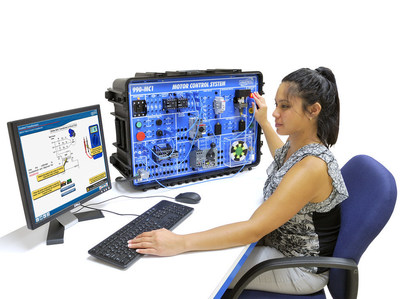TMCnet News
STEM Dropout Rates and the Manufacturing Skills GapJEFFERSONVILLE, Ind., Sept. 26, 2016 /PRNewswire/ -- Students enjoy creating things, both with their hands and in the digital space, and they are also good problem solvers. So, it is no surprise that it is easy to encourage a student's interest in STEM—science, technology, engineering and math. However, this interest is not translating into careers, creating a serious problem as companies struggle to fill thousands of skilled positions. About one-half of students with the intention to earn a STEM bachelor's degree, and more than two–thirds of those intending to earn a STEM associate's degree, fail to earn these degrees within 6 or 4 years, respectively. This is particularly the case with female and minority students (Eagan et al., 2014; Van Noy and Zeidenberg, 2014).  As early as eighth grade, and continuing through high school, students are introduced to STEM in a variety of ways in an effort to promote lasting interest. However, based on the rate of attrition, interest alone is not enough. A recent White House report suggests that students leave post-secondary STEM programs because of the intense classroom atmosphere, difficult classes, and STEM courses that students can't see the relevancy of, in part because they may not be able to envision the kinds of careers that lie at the end of their studies. A key to lowering STEM attrition is ensuring that students have a sufficient STEM background, one that goes beyond simply generating an interest, provided to them in high school, before they enter college and certificate programs. Courses in high school must move beyond the theoretical and into the practical so that students can see their relevance and the available career paths they offer. Only by giving them the opportunity to really explore STEM in a hands-on manner can students determine if a STEM career is right for them. Exposing students to the applications of STEM early, and doing so by way of inherently engaging approaches—like interactive multimedia project-based hands-on learning, and training systems that use industrial components that mimic real-world situations—can turn their interest in STEM into a real desire for a career. Having this opportunity to build early momentum in STEM coursework can lead students to continue further pursuing their STEM studies. If they perform well, they are less likely to drop out of school, or switch to another field of study. Indeed, it's crucial that we hang on to top performers who are capable of making valuable additions to the STEM workforce. Experts in education and industry strongly recommend academic partnerships with the industrial sector in order to improve STEM education. One example of this kind of collaboration between industry and education is the recent partnering of GE Appliances and Amatrol in an effort to expand manufacturing skills and curriculum at local high schools. As Boris Ladwig noted in Insider Louisville, "The grants from GE Appliances and Amatrol (a Jeffersonville firm focused on technical education) and new partnerships with local manufacturers will help the schools better prepare students for manufacturing careers, from machine operators to maintenance technicians and engineers — and help business find more qualified employees." Three Kentuckiana area schools received large money donations toward key learning tools including hands-on workstations to teach industrial maintenance, interactive multimedia curriculum, and instructor training. Some national organizations have recognized the need to do more than create an interest in STEM careers in high school and have created skill-based certifications that can be achieved at the high school level. These documents provide accreditation, proving that the students have been evaluated by an accreditation organization and certified to match industrial standards. Such accrediting organizations—like Manufacturing Skill Standards Council (MSSC) and the National Institute for Metalworking Skills (NIMS)—offer the Certified Production Technician (CPT) Certification and Industrial Technology Maintenance (ITM) Certifications, respectively. Both organizations have endorsed Amatrol's eLearning as recommended preparation prior to applying for these certifications due to the interactive curriculum that was developed to accommodate various student learning styles and its adherence to industrial standards. Thus, high school learning systems and curriculum, especially interactive trainers and multimedia, can create a familiarity and comfort in students that can allow them to stick with STEM because such systems are interactive and challenging, keeping students engaged and encouraged. These systems can also allow students to proceed at their own pace, so that boredom or feeling overwhelmed by the curriculum is simply not a factor. To retain students, instructors need to show real-world problems, as this is the approach that will make sense for most students. Otherwise they can become discouraged, particularly since many of these young people, just entering college or certificate programs, are in a new environment and challenged in ways beyond the classroom alone. In an ever-changing world, where technology touches almost every part of our day-to-day lives, the health and prosperity of manufacturing and other industries are dependent on educators and business leaders highlighting for high school and college students that careers that once may have held interest for a few are now open to the many. If we offer support to move students beyond just a casual interest in STEM, and offer students engagement opportunities with compelling hands-on training and real-world skills in high school, when they arrive at college they will stick with STEM, and contribute to the growth of innovation and improvement in our economy and in our world. Contact: 812-288-8285 Photo - http://photos.prnewswire.com/prnh/20160922/411023
To view the original version on PR Newswire, visit:http://www.prnewswire.com/news-releases/stem-dropout-rates-and-the-manufacturing-skills-gap-300333515.html SOURCE Amatrol 
|
